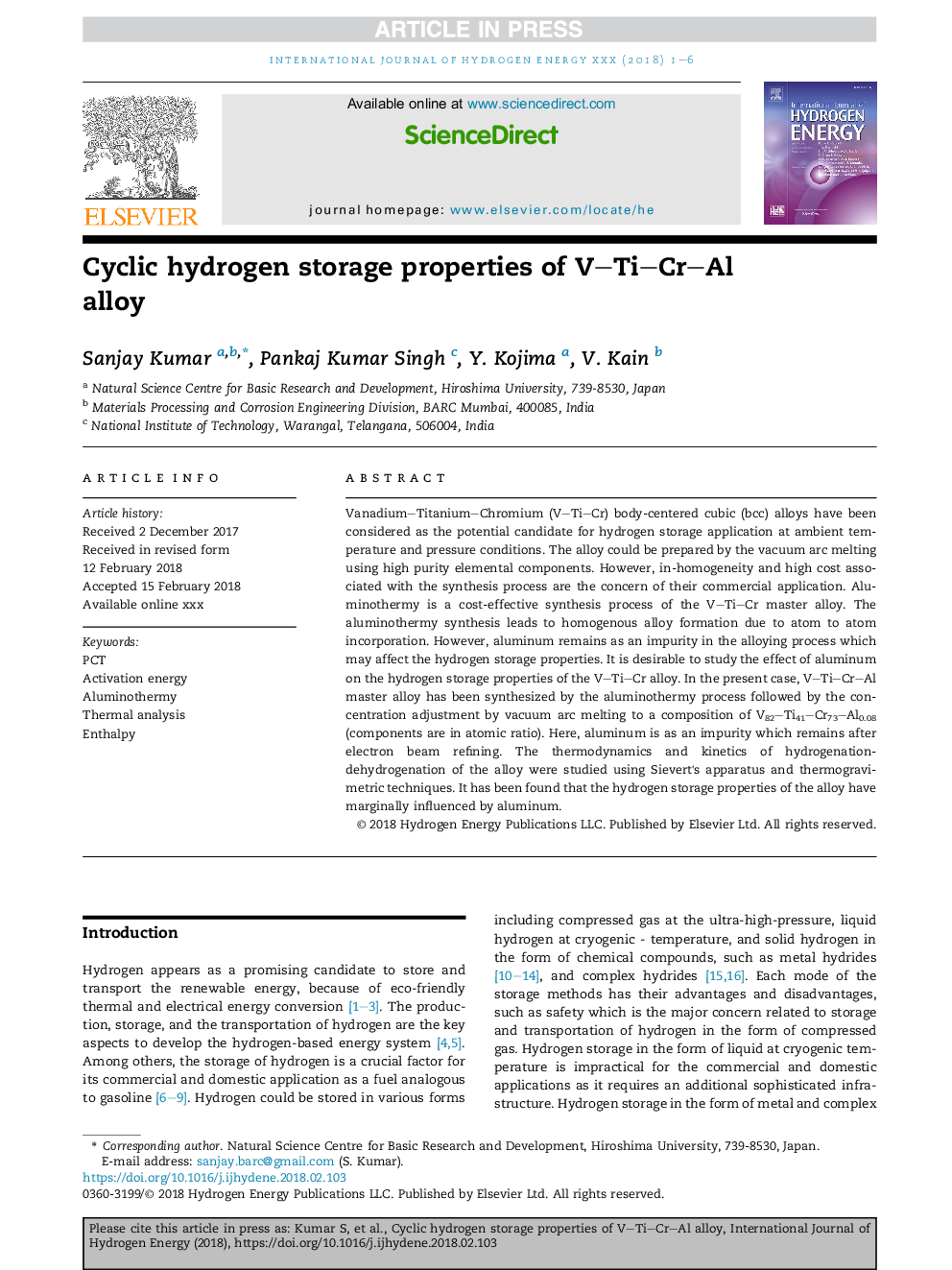| Article ID | Journal | Published Year | Pages | File Type |
|---|---|---|---|---|
| 7706807 | International Journal of Hydrogen Energy | 2018 | 6 Pages |
Abstract
VanadiumTitaniumChromium (VTiCr) body-centered cubic (bcc) alloys have been considered as the potential candidate for hydrogen storage application at ambient temperature and pressure conditions. The alloy could be prepared by the vacuum arc melting using high purity elemental components. However, in-homogeneity and high cost associated with the synthesis process are the concern of their commercial application. Aluminothermy is a cost-effective synthesis process of the VTiCr master alloy. The aluminothermy synthesis leads to homogenous alloy formation due to atom to atom incorporation. However, aluminum remains as an impurity in the alloying process which may affect the hydrogen storage properties. It is desirable to study the effect of aluminum on the hydrogen storage properties of the VTiCr alloy. In the present case, VTiCrAl master alloy has been synthesized by the aluminothermy process followed by the concentration adjustment by vacuum arc melting to a composition of V82Ti41Cr73Al0.08 (components are in atomic ratio). Here, aluminum is as an impurity which remains after electron beam refining. The thermodynamics and kinetics of hydrogenation-dehydrogenation of the alloy were studied using Sievert's apparatus and thermogravimetric techniques. It has been found that the hydrogen storage properties of the alloy have marginally influenced by aluminum.
Related Topics
Physical Sciences and Engineering
Chemistry
Electrochemistry
Authors
Sanjay Kumar, Pankaj Kumar Singh, Y. Kojima, V. Kain,
